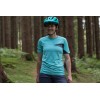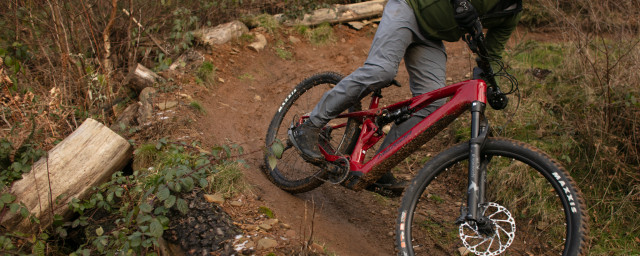The Dakine Session pack is a lightweight and functional pack, great for short trail rides aside from a few strap related niggles.
American brand, Dakine have been making kit since 1979 and I’ve long (but not that long!) been a fan of the company’s design and styling. In my search for the ultimate trail pack, I thought it was high time I tested a pack from the range and settled on this eight-litre hydration pack – the Dakine Session. It’s a pack designed to be minimalist and breathable whilst being practical enough for a day on the trails.
With eight litres of space to play with, the Session has plenty of room to store everything you are going to need for a day long ride, including the usual tools, snacks, jacket and two litres of water in the bladder provided. The main section of the bag is 43cm tall and 18cm wide so it’s pretty narrow but still roomy. There are two front pockets the lower of which contains two sections with which to organise tools or other small items. These organisational pockets do not have fastenings though, so turn your pack upside down and your bits and pieces will come tumbling out into the front section. This section though, reaching to nearly the full height of the bag, was tall enough to house my fairly sizeable hand pump, good stuff. The upper outer pocket is fully fleece lined, keeping sunglasses or a phone protected. On the front of the pack there are two external straps which easily accommodate knee pads but not a helmet or chin bar.
The 2L bladder sits within an inner sleeve in the main section of the bag held in place by an innovative retention system which quickly and easily hooks through the top of the bladder. The Hydrapack bladder itself uses a bite valve which delivers a large volume of water with each mouthful, more than other similar designs I’ve used previously. Unfortunately, the bladder does not feature a removable hose meaning when you need to refill the whole pack has to go to the sink with you. There also is not a lockable feature to the bite valve, I dumped this pack down, face up, once or twice and returned to find it sitting in a pool of its own water as I’d left the valve compressed by mistake.
In use the Dakine Session did prove to be an extremely lightweight pack, it weighs 509g with just an empty bladder inserted. The mesh shoulder straps allow air to flow through them easily and the ‘Breathable Air Flow’ back panel, although it left a feeling that it is sat very close to my back, actually proved to be a fairly unsweaty affair. It’s not to say you’ll be free of the dreaded back sweat in this pack but get a strong breeze flowing and you’ll be pretty comfortable. The thin shoulder straps were super comfy even when the pack was fully weighted, I’ve got a metal plate in my right collar bone so I’m usually the first to know if shoulder straps are sub-standard, the Session didn’t cause any issues at all.
The zips and fastenings are chunky, easy to locate and grab hold of with double zippers on all but the smallest pocket. The lightweight design of the pack means that it has foregone hip pockets and makes do with a skinny waist strap, a feature I really miss when it's not there for stuffing accessible snacks or allen keys in. The waist straps use elastic keepers to keep the excess strap under control but these keepers are not present on the shoulder straps, a flaw that is hard to overlook as it leaves the excess trailing in the wind. Well, it’s that or you will have to devise your own retention system using cable ties.
Another niggle we found whilst riding in the pack was the movement of the chest strap, whilst riding on the flat where not too much body movement is necessary the strap staying place but get more involved in the ride, uphill or downhill and the strap slide up to its uppermost point, a problem that effectively leaves the strap to be un-adjustable. At 5’4”, I size up smaller than most so didn’t find this too much of a problem due to winching the shoulder straps in tighter and needing the chest strap at its highest point. I handed the pack over to a taller male tester from the team and he found the issue quite tedious as it didn’t stay at his desired level.
Whilst climbing and on trails with a lesser gradient the Session stayed in place remarkably well, given the skinny waist belt and narrow nature. The small depth of the pack means that the weight is kept close to your back preventing and swinging about. It was only when the going got steep or jumps were involved that the pack started to migrate up my back towards my head or bounce up and down on my back. This is annoying but something I also found with a similar shaped Evoc pack (review here). The narrow nature of the pack means that it’s hard to keep the weight low down in the pack which I expect contributes to its movement on more technical trails.
The Dakine Session 8L offers a small, good looking pack which is light and breathable for everyday use, that is if you can overcome the strap niggles. At £65 it is in line with competitors but the cost does leave you wondering if you should part with cash for an item with problems that could be easily rectified at the design stage.


















Add comment